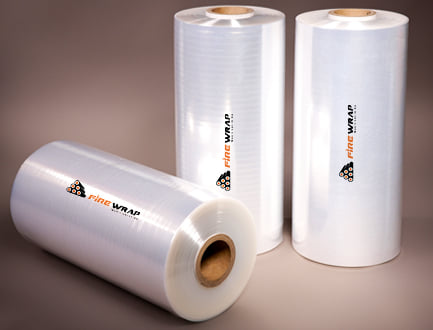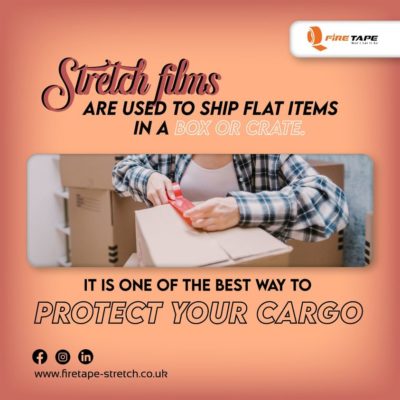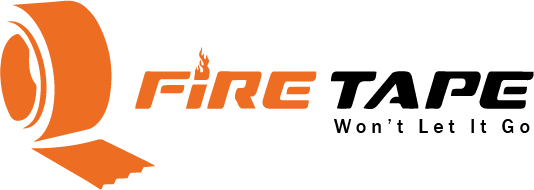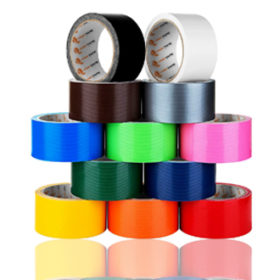Stretch Wrap
How To Know About the Best Stretch Wrap? | Fire Tape
To get what is today the ideal stretch or pallet wrap, it is worth knowing a little about the advancement of this material that has become typical in every warehouse across the planet. Created north of 100 a long time ago and produced with PVC, it had a huge worldwide interest during the 50s. In 1970 a wrap was being created with half stretch, which was an eminent logical achievement for the time.
Nevertheless, the result of the science behind the item was immediately eclipsed. Did not work. It wasn’t strong, strong, or secure enough to adapt to the hardships of freight transport – that huge number of highlights that we’ve underestimated with the current stretch wrap. Another arrangement must be found. It came as low thickness polyethylene. It was more solid, but this time the downside this time was the “stretchability” – it could achieve an unassuming 30% elongation. Another later fit and LLDPE film was conceived (Low Thick Linear Polyethylene) and this saw its direction to the US market in 1976.
Putting Stretch into Stretch wrap
In the later part of the eighties and mid-nineties, stretch wrap had become the defensive packaging part for solid and sturdy transport of goods. Stretching made it conceivable to handle larger pallets, which implied more prudent transport. So the race was on to promote a wrap that could stretch significantly further, to convey much more prominent savings, but with a similar solid presentation. Stretch wrap has now been produced using either a solitary layer of film or a ‘monolayer. So this turned into the initial stage in the next period of its development – trial and error with extra layers of film.
As more layers were added, each layer had its own exceptional ‘signature’ in regards to the work performed. For example, one layer was created to achieve more noticeable elongation, another for solidity, and another for adhesion – consolidated, these layers were the main illustration of the elastic wrap used today. He multiplied the elongation performed by the 1970s shape by 100 percent, and this was the start of additional trial and error that saw many more layers being added, much like a formula, with each layer having its capability.

What Else Can Pallet Wrap Adhesive Tape Do?
So how might this specialized progression affect you as a customer? This 11-layer film can save you money, speed up your palletizing, and even lower costs for your customers. Not horrible for a humble pallet wrap roll! So the way this is done?
- Letting go of your moneyIn general, you can expect a 25% savings on expenses in packing your pallets. Even though fire tape has 11 layers, they are incredibly thin, so you use less film to wrap each pallet. With up to 300% achievable stretch (remember that half stretch model?) you want substantially less film to wrap each pallet, plus you have the option to keep it stable.
- Disposal of delivered damaged goodsNobody likes to have transfers broken or potentially crippled – it hurts at every level, does it? It’s a misuse of money right off the bat in regards to damage to real things. Then there’s the recovery cost of getting everything back to your warehouse and the time it takes to handle the return and transport of a reproduction pallet of new products, with the expectation that this time it will reach its solid goal. Then there’s the expense of an impaired position from your customer’s point of view, who has to settle for replacement products. Firetape has been tested to give unparalleled load stability and cut protection to get your products to their goal safely.

- Cost savings for your customersEveryone likes to set aside money – so couldn’t it be awesome to have the option to share with each of your customers that you can set aside money for them? Plus, without lowering your margins or charging your customers more! With the new plastic package charge appearing with us in April a year from now – all packages with less than 30% reused content will be dependent on a toll, a green tax if you like. This is to support material reuse and decrease the amount of virgin plastic delivered. While the stretch wrap is not accessible as of now with reused content due to the specialized properties of the film we looked at, having the option to use less is a benefit. As mentioned before, fire ribbon is incredibly sparse even with these 11 layers – but it’s only 12 microns thick. On examination, standard stretch films are about 23 microns thick.
What’s the benefit here?
This duty not only concerns you, but it also influences your customers, and assuming you are using less film to wrap your pallets – your customers benefit from a reduced number of plastic packages at the end. They win again with this elite display film with solid, intact means of transport, as well as paying less tax on plastic film waste. Fire tape can follow in general – a 40% reduction in the use of plastic. This is news any of your customers will be happy to hear!

 All Products
All Products